#great western wilderness
Explore tagged Tumblr posts
Text
Weekly Shanhaijing 6 - Joint-Wing Birds ( 比翼鸟 )
This is sort of a continuation to the previous Weekly SHJ. As in 1) the passage below directly follows the one from last week, and 2) I’ve created something of a narrative thread between the instalments.

比翼鸟在其东,其为鸟青、赤,两鸟比翼。一曰在南山东。
The joint-winged birds are to the east. They are blue-green and crimson, and two birds fly on shared wings. It is said they are to the east of South Mountain.
-From the Classic of Southern Lands Beyond the Seas ( 海外南经 )
Red bird,
be my wing.
I cannot be whole
without it.
Green bird,
stay beside me.
Take me across the mountains.
I don’t know what we’ll find
across the ridge,
but just the feeling
of flight on joined wings
the sky above and mountains below
is enough.
Translation
“…to the east.” - I know I just translated “其[direction]” as “to its [direction]” in the last post, but in retrospect, “to the [direction]” would make it work better, both as a standalone excerpt and in the context of the work as a whole.
“..blue-green…” - “青” is honestly one of the most difficult concepts to translate. It’s not just a single colour, but a whole spectrum, from bright green to intense blue. “Blue-green” has become my go-to translation for the word.
“…and two birds fly on shared wings.” - The word “比” in this context is difficult to explain; it’s something like “put them together,” “put them side-by-side.”A more literal translation would be “two birds put wings together.” I decided against that because it felt too vague. Went for something that would paint a clearer image instead, while still trying to keep the economy of the language.
Art
While the text just refers to these guys as “birds,” I’ve always imagined them as looking like waterfowl of some sort, particularly ducks or herons ( the former was probably because I’d been subconsciously influenced by the symbolism of mandarin ducks in Chinese culture ). I decided to combine the characteristics of the two types of bird and sprinkle in my usual funky patterns.
The blue-green bird’s design was also partly drawn from a description of the joint-wing birds from a later chapter, the Classic of the Great Western Wilderness ( 大荒西经 ):
有比翼之鸟。有白鸟青翼,黄尾,玄喙。
There are birds of conjoined wings. There are white birds with blue-green wings, yellow tails, dark beaks.
Writing
I imagined a sort of rhythm throughout the poem. I guess this could be considered a reverse tone poem- the music came first, the words settled into the beat later.
It may not seem like it, but I swear there’s a connection between this and the previous instalment ( apart from the little cameo of the snake-fish ). It’s that feeling of discovery, of exploration.
Speaking of the snake-fish, we’ll see more of them in the next instalment. Stay tuned!
#southern lands beyond the seas#great western wilderness#biyi#bird#my art#chinese culture#mythology#folklore#shanhaijing#weekly shj#snake fish thing
3 notes
·
View notes
Text
"and what do all the great words come to in the end, but that? i love you - i am at rest with you - i have come home." - dorothy l sayers
old man!logan x reader
warnings: some angst, touching and sensuality, suggestiveness, insecurity and doubt from logan, comfort and fluff
a/n: i have no explanation for this other than this is how i want to love this man. just a drabble inspired by the quote above. 500+ ish words

“What's that look for?��
You sit beside him on the couch in the makeshift living room of the abandoned smelting plant. An old western plays on the screen in front of you, supplying the room with just enough light to see the way he's studying your face.
He doesn't answer - just continues to stare at you with the same solemn, distant expression. You raise a hand to his face, cupping his chin in your palm and holding it there.
“What's on your mind, honey?” You murmur, angling your body to give him your full attention. You trail your thumb along the thick stubble that litters his cheekbone.
“You should be somewhere prettier than this,” he mumbles as he lowers his mouth to kiss your palm. “Somewhere that feels more like an actual home. That's all.”
Your heart sinks to the pit of your stomach to hear him say it. You don't doubt that he truly believes every word.
He really has no fucking idea, you think. All this time and he still has no idea.
“The coziest, warmest house in the world wouldn't feel like home if you weren't there,” you whisper. You're not sure why you're speaking so quietly - Charles and Caliban are both in the old water tank next to the smelting plant for the night. Right now, it's just you and him.
You maneuver yourself across his lap, bracketing your knees on either side of his hips. He looks up at you in the illumination of the TV's glow.
Somedays, his exhaustion is more visible than others. Tonight, you see it in the dark circles and the defined crinkles that surround his eyes.
“You are home to me, Logan.”
You plant a small kiss to the bridge of his nose and his eyes flutter shut.
“You'd be home if we were living in the backseat of your limousine and bathing in rest stop bathrooms.”
Your lips graze down his nose, past his lips and chin in a featherlight trail until you stop at the pulse point of his throat. He tilts his head back for you, his hands coming to rest around your hips.
“You'd be home if we lived in a tent in the middle of the wilderness,” you breathe against his skin. One hand comes to the rest against the side of his throat, your fingers twirling around tufts of his hair at the base of his neck.
He stiffens beneath you, a bulge beginning to form where your body hovers over his. You plant kisses across his neck and up to his ear as his fingers dig into the meat of your hips until the pressure teeters between pain and pleasure.
“And you're my home in this old, ratty smelting plant, too,” you whisper with a kiss to his earlobe. He hums at the sensation, using his grip on your waist to pull you down against his hardened length through his pajama pants.
“Now, would you rather go to bed or stay right here while I love on ya?”
#logan howlett x reader#logan howlett#logan howlett x you#logan x reader#old man!logan x reader#old man!logan#logan#logan 2017#logan howlett drabble#logan howlett fluff#logan howlett angst#logan howlett oneshot#logan howlett one-shot#wolverine x you#the wolverine x you#logan howlett fanfiction
495 notes
·
View notes
Text
Today Marks 200 Years of Dinosaurs!!
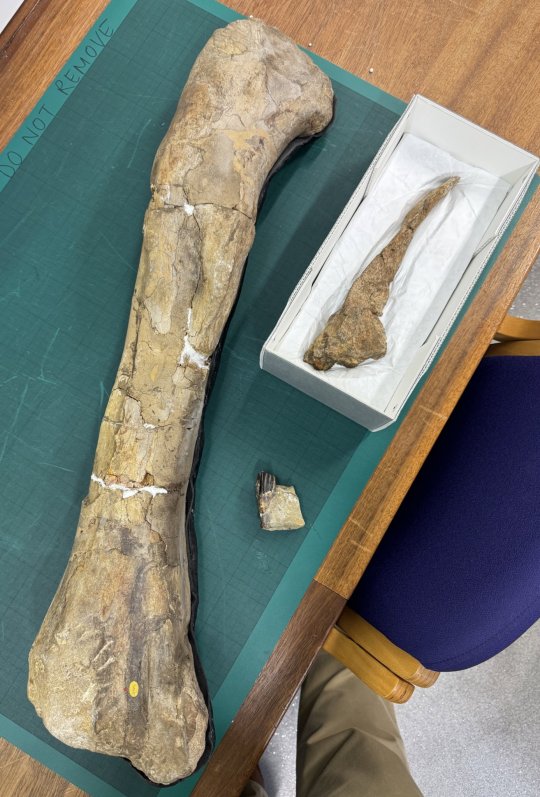
Photo by Paul Barrett (image link here).
On this day, February 20th, 1824, bones from the Stonesfield Slate in Oxfordshire, England were described by William Buckland. Dinosaur fossils have likely been known since time immemorial, but that day was the first time a dinosaur had been described by western science (being the predatory Megalosaurus). Two decades later, Richard Owen would use the three fossils shown above - belonging to three separate animals Megalosaurus (leg), Iguanodon (tooth), and Hylaeosaurus (spine) - to formally recognize Dinosauria as a lineage of animals. Today over a thousand Mesozoic dinosaur genera are known, with many being described on a monthly basis, and our understanding of these animals has grown tremendously since the 1820s. We now recognize that dinosaurs were sophisticated, highly active reptiles with diverse behaviors of which one lineage survived the great Cretaceous Mass Extinction Event: the birds. Paleontologist Darren Naish has said that dinosaurs are popular "because they look neat, because they're awesome in every sense of the word, because they ruled a vast, chaotic, complex wilderness, and because they're the source of a myriad of big, really interesting questions". And I'm sure we all couldn't agree more.
So here's to 200 Years of Dinosaurs! How will you celebrate one of the world's most popular and incredible animals?
1K notes
·
View notes
Note
In the SC universe are the sky cowboys actually called "cowboys", and do many of them herd actual cows?
Hi there!
Great question! The "sky cowboys" are referred to as "pilots" in-universe and are set apart by their traditional blue scarves. Pilots can be good guys or bandits, and while pilots hold many different jobs in the SC world, nymbak drives are the equivalent to long cattle drives:



"Actual" cowboys do exist, as do literal cattle, but how they're handled is a bit different primarily due to the chasms. In the SC world the chasms prevent the massive, sprawling ranches and long cattle drives that we normally associate cowboys with.
Instead, ranchers and farmers usually own smaller parcels of land and a "cowpoke" is the term for a ranch hand who moves the herd of cows around as necessary. Though with less land and smaller herds, "drives" are far smaller in scope and are more akin to a working ranch's immediate paddocks and local pastures. The smaller land areas and chasms separating herds also perpetuates more distinct breeds with specialty cuts of meat or methods of cheese making.
Overall, the vibe of the cowboy -- the self-made man (or woman) who drifts as he pleases to pick up jobs, has a strong moral compass, and works hard to live off the land, or who has a homestead in a wilderness frontier and all of the grit and tenacity that goes with that -- is distilled into the pilots. Cowpokes can have those qualities of course, but the classic western cowboy flavor is something I primarily assigned to pilots.


I love rambling over the countryside on horseback, but I often long to cross the next ridge or to see over the treeline ahead of me, especially if I don't know what's on the other side. To me, flight - to just be able to pick yourself up off the ground and fly over the ridge - is the ultimate expression of the kind of freedom cowboys are associated with.
~ Larn
230 notes
·
View notes
Text
"Next Monday [6/17/24] is the start of National Pollinator Awareness Week, and one Colorado advocacy group is hosting a flower planting drive to rewild Colorado’s meadows, gardens, and just maybe, its children too.
Created by constitutional amendment in 1992, Great Outdoors Colorado (GOCO) is a state-funded independent board that invests a portion of Colorado Lottery proceeds to help preserve and enhance the state’s parks, trails, wildlife, rivers, and open spaces.
This year, GOCO’s offshoot Generation Wild is distributing over 100,000 free packets of wildflower seeds to collection points at museums, Denver Parks and Rec. offices, and libraries all over the state to encourage kids and families to plant the seeds in their backyards.
The Save the Bees! initiative aims to make the state more beautiful, more ecologically diverse, and more friendly to pollinators.
According to a new report from the Colorado Department of Natural Resources, 20% of Colorado’s bumblebees are now at risk of extinction. Even in a small area like a backyard, planting wildflowers can make a positive impact on the local ecosystem and provide native bees with a healthy place to live.
“The Western Bumblebee population has declined in Colorado by 72%, and we’re calling on kids across Colorado to ‘bee’ the change,” said GOCO Executive Director Jackie Miller.

Named after Generation Wild’s official mascot “Wilder,” the Wilderflower Seed Mix was developed in partnership with Applewood Seed Co. and packets are now available for pickup at designated partner sites including more than 80 Little Free Library boxes.
By distributing 100,000 Wilderflower packets, Generation Wild is providing more than 56 million seeds for planting in every nook and cranny of the state. All seeds are regionally-native to Colorado, which is important for sustaining the living landscape of bees, birds, and other animals.
Additionally, by using flower species adapted to the Mile High climate, landscapers and gardeners need to use less water than if they were tending non-native plants.
“Applewood Seed Co. was excited to jump in and help Generation Wild identify a seed mix that is native to the Colorado region and the American West, containing a diversity of flower species to attract and support Colorado’s pollinator populations,” stated Norm Poppe, CEO of Applewood Seed Co. “We hope efforts like this continue to educate the public on pollinator conservation and the need to protect our native bees and butterflies.”
Concluding her statement Miller firmly stated that children grow up better outside, and if you or a parent you know agree with her, all the information on how to participate in Save the Bees! can be found here on their website, including a map showing all the local pickup points for the Wilderflower Seed Packets."
-via Good News Network, June 13, 2024
#wildflowers#wild flowers#colorado#bees#native bees#entomology#insects#save the bees#pollinators#bumblebees#bumble bee#i love bees#biodiversity#native plants#urban gardening#gardening#ecology#conservation#endangered species#wildlife conservation#enviromentalism#good news#hope#hope posting#solarpunk#denver#boulder colorado#colorado springs#libraries#public libraries
488 notes
·
View notes
Text
The Varieties of Chinese Mermaids
In the modern day, most people will think of the pearl-crying Jiaoren. However JIAOREN IS NOT THE PERFECT EQUIVALENT OF THE MERMAID in pre-modern folklore.
Chinese mermaids come in multiple types. Most of them can be found in the Chronicle of the Mountains and the Seas (Shan Hai Jing/山海經). Others can be found in the In Search of the Supernatural (Sou Shen Ji/搜神記) or Extensive Records of the Taiping Era (Taiping Guangji/太平廣記).
YUFU/MER-WIFE (魚婦): Zhuanxu was a god-emperor in legendary times, whose accomplishments included sending two of his sons to complete the separation of Heaven and Earth. When he died, fish ate his corpse, becoming half fish and half human women. They live in the Great Wilderness toward the west of China. They combine traits of humans, fish, and snakes. The Classic of Mountains and the Seas states: "There is a fish half-withered, it is Zhuanxu that died and then revived; when the winds blow northward, the sky whips up great geysers, snakes transform into fish, and those are mer-wives."
LINGYU/HILL FISH (陵魚,鯪魚): The Lingyu lived in the northern regions of China, either in the sea or mountain streams. They have human faces and limbs, but fish bodies. They are identified with Chinese giant salamanders or mud carp in the modern day. The Classic of Mountains and Seas states: "The nation of Guye is in the sea, among the Guye mountain range, surrounded by peaks to the southwest. There are great crabs are in the sea. There are Lingyu, which have human heads, feet, and hands, in the sea."
CHIRU/RED RU FISH (赤鱬): The Chiru lived in mountain in the south of China. It was red all over, had a human face, and its call sounded like that of a shelduck or mandarin duck. Eating its flesh protected people from contracting scabies. They are identified with sockeye salmon in the modern day. The Classic of Mountains and Seas states: "Three hundred miles more to the east, there is the mountain called Blue Hill...The Ying Waters emerge from here. Within are many Chiru; their forms are like fish, yet they have human faces, and their cries are like that of a shelduck. Those that eat its flesh will never have scabies."
DIREN/DI PEOPLE (氐人): The nation of the Di People was in the South of China. They were human from the waist up and fish from the waist down. They might have been a mythologization of the real Di People, who lived in western China, spread out from Shaanxi to Gansu. They joined the confederation of nomadic peoples who conquered Northern China during the Sixteen Kingdoms period. The Baima people of Gansu believe themselves to be descended from the ancient Di. The Classic of the Mountains and Seas states: "The nation of the Di People is west of the Jianmu Tree. Its inhabitants have human faces but fish bodies, with no feet."
HAI RENYU/SEA MERMAID (海人魚): The Sea Mermaid lives in the East China Sea. They tend to be around five to six shaku tall. (4'7"-5'6" or 1.4-1.68 meters.) Their upper bodies were that of humans, and they were all very beautiful. Their skins were white as jade, and their tails had no scales, but were covered in fine rainbow-colored hairs. Their hair grew long and wild like horse manes. Their private organs were much like that of humans, and they often sought humans or were sought by humans as mates in coastal communities, where they would live in a pool on their spouse's property. Sometimes they had red feelers or fins on their elbows and backs. Their bodies could not be penetrated by blades, but their fats could be harvested after death to form ever-burning candles. Han Dynasty texts state: "Merfolk have a human-like form longer than one shaku. They are not fit for consumption. Their skins are rougher than those of sharks, and cannot be penetrated by saws. They have little holes on their neck that they breathe through...Their fat is used to light lamps in royal tombs because the fire will never extinguish." Extensive Records of the Taiping Era states: "Sea Mermaids are found in the Eastern Sea. The largest ones are five or six shaku long. They are shaped like humans, with the brows and eyes, mouths and noses, hands and fingers, and heads of beautiful women, lacking in no feature. Their flesh is white as jade, and they have no scales, but thin, soft, and sleek hairs of five colors about one or two inches in length. Their private organs were no different from those of ordinary men and women. Widows and widowers from coastal communities often acquire them and raise them in pools. They mate the same way humans do, and never harm humans."
LOTING YUREN/LOTING FISH-MEN (盧亭魚人): Loting Fish-Men were found in the south of China, mostly around the Guangdong, Macau, and Hong Kong regions. They had humanoid limbs and humanoid faces with yellow hair and yellow eyes, but scaly bodies with fish tails. They lived mostly in the water, feeding on fish, but also built houses from mussel shells, and their favorite snack was chicken blood. They were a mythologization of the Tanka People, a southern Chinese pariah class who were once forced to live on their boats, as well as the Semang People. Ming Dynasty texts state: "The Jin Dynasty rebel Lu Ting was defeated and fled into the Guangdong region, where he lived a fugitive life on the water. After some generations, his descendants were unable to procure food or clothes, so they went about bare bodied and were called Loting. They would often sail out on the sea fishing for food, and they could all lie underwater for three or four days without dying, for they had already become fish." Qing Dynasty texts state: "Among the merfolk are the Loting Fish-Men, who are very numerous on Dayushan Island and the Wanshan Islands. Their adults are like humans, with male and female. Their hairs are dusky yellow and short and their eyes are also yellow, while their faces are black. Their tails are around an inch long. When they encounter humans they dive fearfully into the water. Often they would float along the waves, which would amaze people, who would they chase them. When a man who acquired one their females did the dirty with her, the fish-woman could not speak, only giggle. After a long while, she learned to wear clothes and eat grains. She was brought to Dayushan, where she went back to the water. These are the merfolk who do not harm men."
JIAOREN/SAMEBITO/SHARK-MEN (鮫人): Jiaoren are found in the South Seas. THEY ARE MER-SHARKS. THEY HAVE INKY BLACK BODIES, WILD HAIR, GLOWING GREEN EYES, AND SHARP TEETH. They are usually employed by dragon gods as weavers, capable of working tirelessly and spinning special waterproof silks. Their tears became pearls. They were first equated to Western mermaids by modern fantasy writers romanticizing the fact that they cried pearls.
WA WA YU/KIDDO FISH (娃娃魚): The Chinese Giant Salamander was often called a "mer-person" in the Ming and Qing dynasties, and described having a cry that resembled a baby's wail. To this day the colloquial name is still "Kiddo Fish".
434 notes
·
View notes
Text
some ideas i'll get to (aka my wips are a revolving door that my sideblog can't keep up with so i'm posting them here so i can hold myself accountable)
hitchhiker au with Simon (the man you ran over and left on the side of the road in a deadly hit and run won't leave you alone; horror)
warden/ward Price (the man who took you in, practically raised you, is getting married. that simply won't do. pseudo father figure, pseudo incest, electra complex; guilt, murder, manipulation, drama, smut)
ward/warden Simon (he wasn't there for you when you needed him the most, but he's here now. he'll make sure your needs are met. all of them; smut, drama)
older neighbour Price (after coming home from college for the summer, you decide to pursue your older neighbour daddy Dom Price in a romance that leaves a bad taste in everyone's mouth; drama, smut)
dad's best friend Price (the joke? you meet a man in a bar. the punchline? he's your dad's friend. a man you grew up with. the unexpected twist? his hand is on your thigh. he still buys you a drink. what are you supposed to do when you've been in love with him since you were sixteen? you go home with him, of course; smut, angst, drama)
best friend's dad Price (armchair psychologists on tiktok could tell you exactly what's wrong with you, you think, as you roll around on his bed, hand shoved down your pants, thinking of him like he wasn't father of your childhood best friend; drama, smut, guilt)
serial killer Price (70s au. he's new in town. strange. but he talks to you, listens. tells you that you're different from the others. but when you start to act just like them, he decides to teach you a lesson in places. specifically, your place beneath him. and if you don't behave, at the end of his knife; horror, thriller; smut)
dog trainer Simon (a vicious dog meets a puppy with abandonment issues. neither see the issue with codependency; smut, toxic relationships)
omegaverse Gaz (after giving Price his happy ending, Kyle decides he deserves one for himself; smut)
dollmaker Simon (all you want is the attention of your god. he just wants her back. so you give that to him; horror, smut)
butcher!Simon (series: mafia "butcher"; you don't question your brother when he sends you to drop off packages to his friends, but when the enforcer for the 141 shows up to teach the little brat selling on their turf a lesson, you realise there's different ways to give away pounds of flesh; slaughterhouse worker Simon just gets out of jail for murder and teaches you how a fielddress a buck. a cute first date if he wasn't holding a knife to your neck; butcher Simon catches a rare fish)
hiking au Soap (they tell you to never hike alone, but when all your friends refuse to go with you, you turn to the internet for help where you meet a man who eagerly agrees to throughhike the Great Divide Trail with you; alone in the wilderness with a man you barely know for eight weeks who seems a little intense. what could possibly go wrong? thriller, smut)
outlaw Price (it's just not in his nature to do anything for free. you should have known that before you asked him, of all people, for help; western, cowboys outlaws and wild west)
priest Price (you find the new pastor drinking whiskey and smoking a cigar by the dock. he finds a gift from god in you: a pretty little wife he gets to pour his faith into; catholicism, religious imagery, bastardisation of religion, smut)
#i keep forgetting people follow me because i write stuff they like#and get so embarrassed whenever i have to post something about my writing like you're not here exclusively for that lmao#wips i need to keep track of because im on a creative high and will need these for the Slump#wips
285 notes
·
View notes
Text
Conservation groups filed objections this week to the U.S. Forest Service’s proposed final management plan for the Grand Mesa, Uncompahgre and Gunnison national forests in western Colorado. The plan would allow commercial logging on more than 772,000 acres of public lands, including mature and old-growth trees — a 66% increase from the current forest plan.
“A sizeable area of our beloved forests could be sacrificed to commercial logging at the expense of our already dwindling wilderness areas, wildlife habitat and recreation,” said Chad Reich with High Country Conservation Advocates. “Outdoor recreation is a far larger economic driver for our communities than the local timber industry that benefits from cutting these forests. The Forest Service would’ve known that if it had conducted an economic analysis, as required by law.”
Under the proposed plan mature and old-growth forests, which store massive amounts of carbon, could be commercially logged. Forest managers would not be required to identify and protect old-growth and mature trees. Steep slopes across the forests, including Upper Taylor Canyon and Slate River Valley, could also be logged despite the high risk of severe erosion and threats to water quality.
“The proposed plan directly violates federal policy on protecting mature and old-growth trees as a cornerstone of U.S. climate action,” said Alison Gallensky, conservation geographer with Rocky Mountain Wild. “The Grand Mesa, Uncompahgre and Gunnison national forests boast the highest carbon sequestration capacity of any national forest in the Rocky Mountain region. Despite this the Forest Service has failed to ensure these vital carbon sinks aren’t logged and sold.”
Objections also challenged the Forest Service’s failure to take urgently needed climate action by prohibiting new coal leasing in the plan.
...
The Forest Service recommended adding only 46,200 acres of new wilderness area in the final plan. The community’s conservation proposal had called for more than 324,000 acres of new wilderness lands. In addition, the Gunnison Public Lands Initiative offered a broadly supported proposal for new wilderness and special management areas in Gunnison County that was mostly excluded.
...
“Community members proposed special management area designations to protect pristine forestlands in the North Fork Valley from logging and oil and gas drilling,” said Peter Hart, legal director at Wilderness Workshop. “The Forest Service ignored those proposals and chose not to protect those areas in the new plan.”
The groups also raised concerns about the plan’s failure to address the myriad needs of plants and animals that depend on the forests.
“Over 20 years ago Colorado Parks and Wildlife reintroduced Canada lynx to the San Juan Mountains,” said Rocky Smith, a long-time forest management analyst. “This is a great source of pride for wildlife lovers in this state. Lynx are federally threatened and depend on mature forests with large trees. This plan allows for logging that could easily degrade or destroy much of the best habitat for lynx and their main prey, snowshoe hares, and undermine Colorado’s hard work to reestablish and maintain a viable lynx population.”
The Grand Mesa, Uncompahgre and Gunnison national forests also provide habitat for the iconic bighorn sheep and lesser-known species like the Grand Junction milkvetch and the Tundra buttercup. These species, among others, need special designation the Forest Service grants to plants and animals when there is concern about their ability to survive in the area. Many struggling plants and animals were left off the list in the proposed final plan.
“Without the species of conservation concern designation the Forest Service has no obligation to make sure the plants and animals continue to exist locally,” said Chris Krupp, public lands attorney with WildEarth Guardians. “In many cases, the agency decided not to designate wildlife, plants or fish merely because it had no data on their population trends. Without species of conservation concern designation, the number of bighorn sheep in GMUG could dwindle down to almost nothing and the agency wouldn’t have to do anything about it.”
#ecology#enviromentalism#old growth forest#colorado#us forest service#lynx#bighorn sheep#grand mesa#Uncompahgre#gunnison#national forest
499 notes
·
View notes
Text
THEME: Bittersweet Futures
Today’s recommendation is all about games that bring us into speculative futures, from the highly plausible to the completely fantastical. You’ll find giant bugs, machine animals, and eco punk anti-fascists in this collection of games.
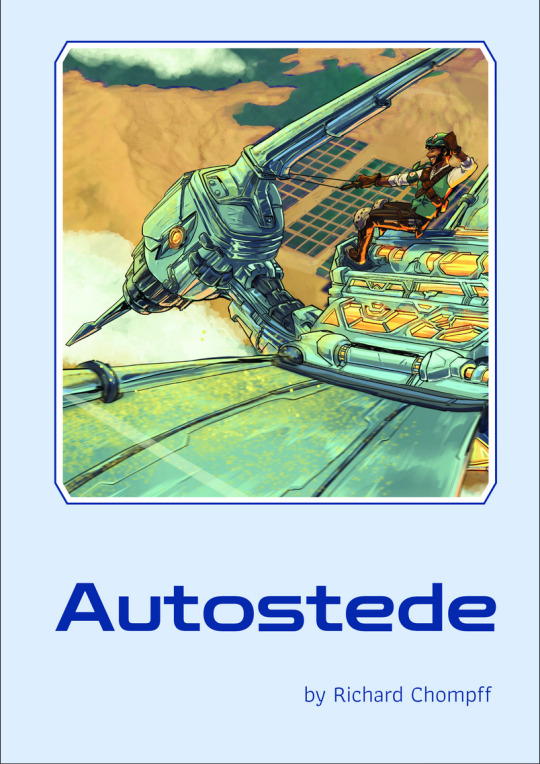

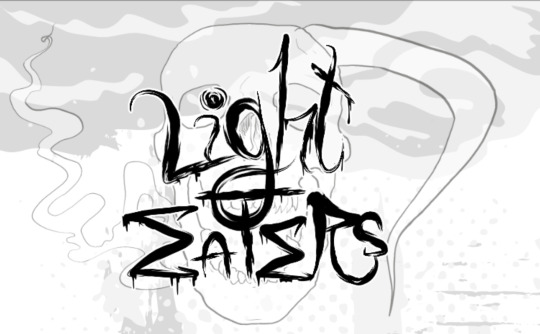
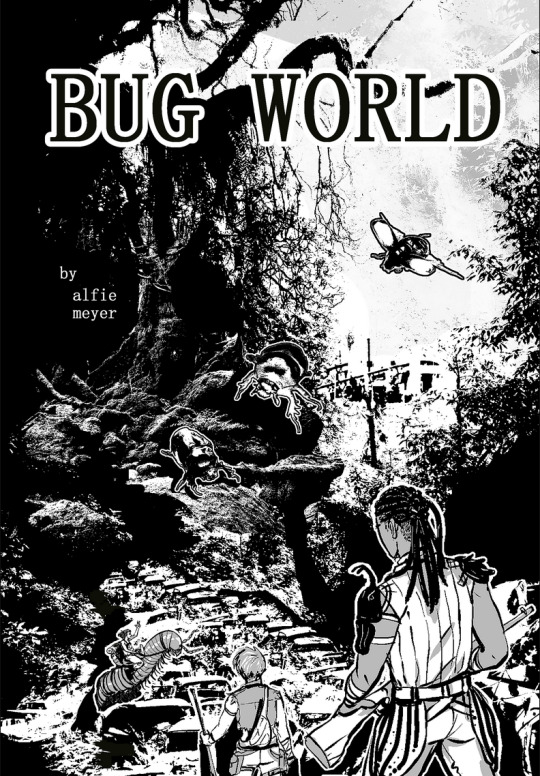
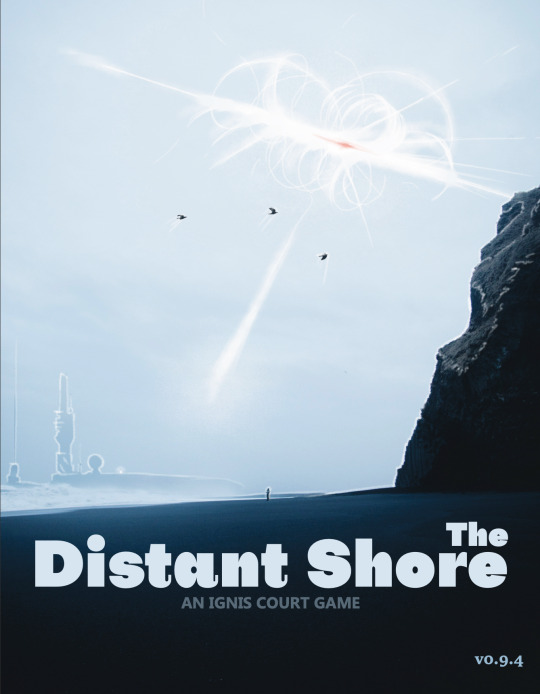

Autostede, by Kettle and Clock.
You are a Drover. Your mechanical companion, your “Autostede,” is all that keeps you safe against the deadly plants and roving wild stedes in the wilderness between towns. And you keep them running. Together, you can take on the world, which is good because the world is a dangerous place and its your job to keep the small, separated towns safe and connected.
Autostede is a tabletop roleplaying game Illuminated by LUMEN in which you play as Drovers, the few who choose to modify their Autostedes into weapons capable of surviving the harsh wilderness between towns.
Actions taken with the ‘stede interact with their wishes, turning every roll into an ongoing conversation with your companion, where you come together to find the best solution to a problem.
Autostede feels very much inspired by Horizon Zero Dawn, with a bit of a western twist. Character creation involves two parts. First is Drover Creation, which is attached to your mask, an air filtration device that also grants special skills and points towards one of the three main stats as a strength for you. The second part is your Stede, a character sheet with a 4-section hex grid, with each hex representing attribute bonuses, passive abilities, and modules that can serve as weapons, power generators, extra limbs, and so on.
While the game is based in LUMEN, there’s definitely pieces of it that feel unique, such as your mechanical steeds, and the way skills are used in the game. Each character has access skills that are generally useful, but also can do things that feel a little unhelpful, such as “bewilder” or “consider”. These are Recovery skills; most skills are Spent when you use them and can’t be used right away again after you’ve used them, but Recovery skills can be used to refresh your options, in a sense. These balances of skills feels like a great way to introduce pauses into what might otherwise feel like a hectic game, encouraging your characters to demonstrate weaknesses or narrative moments that are more about the character than what the character is doing.
If you love building custom mechs but still want a lightweight set of rules, I definitely recommend Autostede.
Paratype, by megasomamars.
"The world ended long ago. It doesn’t matter how; pollution, nuclear fallout or some cataclysmic event, no one really knows. What they do know is that it didn’t take long for the bugs to show up. Giant insects terrorize what remains of humanity, leaving survivors scrounging for what little resources they can get.
For most, life in the wasteland has become fast, dangerous and insectile. Thanks to science, some individuals have even found a way to splice their DNA with that of these mutant invertebrates to develop strange new adaptations of their own. These hybrids are humanity's newest area and last hope. Now all that’s left is to survive."
Paratype is an interesting little hybrid of a game. The basic rules involve rolling to hit a difficulty level, with rules for both advantage and disadvantage. However, the game also includes a special roll called the Risk roll, which involves rolling 2d20 and taking the result that is the farthest from 10. This is great for situations where you want either a fantastic success or a deadly failure.
Characters have four general stats, with sub-stats that represent specialties, which reminds me of World of Darkness or Genesys games. The inventory system takes inspiration from Mausritter, consisting of hexagonal shapes that can be filled with different size items. If you buy a backpack, your inventory expands!
Finally, the Health of your character is measured in both Hit Points and Stress points. You lose hit points, and gain Stress points. Running out of HP = death, while hitting max SP leads to your character going “feral”, which makes your character virtually unplayable. I think the explanation in the lore for this is a DNA splice that has changed your character to make them better survivors. I also feel like it carries echoes of Trauma in Blades in the Dark, or Corruption in Urban Shadows, except that in Paratype, SP can be healed a little easier.
Light Eaters, by blindink.
An interstellar encounter brought a Light to the earth, corrupting reality and leaving humanity in ash. The last city stands against the inevitable, remnants of the pre-existing mortal Authority desperately clutching for power. Degenerates stalk the wasteland with insatiable hunger, encircling the dying carcass of order. You are the misfits, the should-not-bes, the first and last signs of apocalypse. Born from the end, you are Light Eaters. In your wake, nothing will ever be the same.
Light Eaters is a campaign-style role-playing game for three or more players, telling the story of the last city hurtling towards an inevitable end. Players take the role of Light Eaters, near immortal post-human beings watching helplessly as humanity as we know it comes to an end, fighting back against the Authority and the effects of their own Degeneration. They decide for themselves what matters, and what they take with them into this new world.
Light Eaters uses 6-diced dice as resources, which you can place on slots in 4 different move categories in order to set yourself up for action scenes. You can only assign 4’s, 5’s and 6’s: 2’s and 3’s can be re-rolled, while 1’s inflict conditions or allow something called Chaos to rise. Your characters can work as a team, sharing dice and distributing Conditions evenly, and you can also oppose one-another, attempting to disrupt each-other’s rolls by spending personal resources.
The general game play appears to consist of an over-arching problem, with various levels framed as scenes. Each scene will include an obstacle, often in the form of opposing NPCs. These NPCs carry Facets that can be damaged through the actions of the PCs, and each Facet consists of descriptive words that represent powers and personalities that will affect the NPC’s choices. Over time, Chaos will build, triggering new events every time you reach a new level. When Chaos reaches level 4, the game is over; narrate what happens based on the events that have happened so far.
This game looks like a great option for players who want stakes that raise higher and higher, and plenty of ways to interpret their special powers; You can get a taste of this game by checking out an ashcan scenario, called Light Eaters: Thunderfuck, a scenario with pre-generated characters and a problem that each character is motivated to solve.
Bug World, by alfie meyer.
Maybe the apocalypse could have been averted, but it wasn’t, and here we are, in a brand new world. this isn’t your cold, nuclear winter, sparse and dead kind of post-apocalypse. the end sent the world on a new course, brimming with life - just not quite as much human life as before. ok, barely any. in the super oxygen-rich atmosphere of the earth today, insect life has thrived. it only took a few decades for bugs to reach incredible sizes, and now, about a century-and-a-half after the disaster, gargantuan insects are a normal sight.
from a ladybug the size of a dog, to millipedes that might as well be trains, to horned beetles with skeletons big enough to use as shelter. bugs are huge and they are everywhere. the remaining humans have domesticated some, trained others, made wary peace with some intelligent groups, and carved themselves out sections of the world to live.
Bug World is a Powered by the Apocalypse game in that mechanically, it carries a lot of the hallmarks: playbooks, stats that add modifiers to moves, and graded success. It’s also literally a post-apocalypse: the world is broken and dangerous, and the players are scavenging to survive and learning about the past in the process. However, I think in comparison to Apocalypse World, the moves and goals of the characters are less integrated; in Apocalypse World, a character is motivated by lack of resources to intimidate, insinuate, and barter with the other inhabitants of their settlement for more. In Bug World, you are instead motivated to work together to go searching for the things you need to survive.
The Distant Shore, by The Ignis Court.
Transhumanity's empire has been sundered. The Machine Minds they had relied too heavily upon have left them, and Earth too has disappeared. The Settlements across the Sol System have been left scattered and isolated in the black. As megacorp, fascists, and Psionic Tyrants begin movement to take advantage, an entity known as the Distant Shore has manifest from Ceres, and its caustic light has begun tugging at the psyche of every thinking being.
Lucky then that the Machine Minds saw fit to offer you a parting gift: an Ancile, fragment of the Machine Minds. Their nature symbiotic with your own names you Psion, and one capable of great and terrible power.
This is the Distant Shore.
The Distant Shore is a very interesting example of how your characters’ backgrounds and the lore of the game are built into the process of character creation. For example, you must choose a character background that will place you on the outside of the system of power, and each character must also contain an Ancile that gives them incredible power while also makes them dangerous.
The system itself uses d20’s, with a 10 as a threshold for success. However, how well you succeed is determined by your character’s skills - if you are Untrained in a skill, a success is still partial, and if you are Trained in a skill that aligns with your background, you cannot fail. Your training also determines critical points of your backstory. For example; if you are Trained in Engage, name a fight you didn’t win and what it cost you. I love that these kinds of tie-ins ensure that the players will learn what they need to know about the setting without overloading them with information.
The designer also has an adventure document for this game called No More Tourists, if you need a place to start.
Why We Fight, by Stop, Drop & Roll Games Studio. Why We Fight is a solarpunk narrative TTRPG where you play a crew of eco-punks fighting fascism to build a brighter, greener future.
Your Crew will journey through the remains of a post-civil war country to save lives, reclaim nature, create a community of compassion, and beat back the oppressive forces that threaten the chance for a new start.
But most of all, it’s about learning about each other, and the things that inspire us. It’ll take close co-operation and a diverse set of skills, but together, we can make change!
Why We Fight can be played solo and GM-less, with the elements that would normally be GM-ed attached to randomizers to help the group construct missions together if that is what you so desire. The game is focused on a post-apocalypse that highlights many concerns about the consequences of an increase in fascist-leaning governance, which means it isn’t necessarily escapist, but it might give your table the space to talk about elements of the future that cause them anxiety. It might also give you a chance to demonstrate agency in situations where you normally don’t.
Character specialties are distributed among mental, physical and social categories, and feel pretty standard when it comes to a list of character skills. The group works together to construct a mission, using dice to determine elements such as opportunities, locations, and various situations that may cause complications. Play happens over the passing of a day, with different modifiers attached to specialties according to the time of day. I think this might be interesting way to add complexity that encourages strategy when it comes to plotting out your next moves.
Finally, travel between conflicts and other scenes serves to flesh out the world and add depth to your character’s experiences, using roll tables to describe how small changes in the world give your characters reasons to hope.
For Further Reading...
Post Apocalyptic Community Recommendation Post
Nuclear Radiation Recommendation Post
Fallout Recommendation Post
#bittersweet futures#post apocalyptic#indie ttrpgs#tabletop games#game recommendations#dnd#indie ttrpg
65 notes
·
View notes
Text


George Francis “Gabby” Hayes (Saga of Death Valley, Trail Dust, Silver on the Sage)—I am submitting Gabby Hayes on behalf of my dad, who suggested him when I described the concept of scrungly actors. George “Gabby” Hayes was a supporting character in countless cowboy B-movies, playing opposite Hopalong Cassidy, Roy Rogers, Gene Autry, John Wayne, and more. He memorably elevated a Wild West stock character, an “old codger” full of odd turns of phrases and quirky stories. He had a great character voice. Along with his basic scrungliness, his character was warm and friendly, and he made the scenes he was in special. Here is a scene where his character talks to his grandkid and tells a tall tale [under the cut] And here he is welcoming greenhorn-seeming Roy Rogers to town, being cantankerous but also pleasant in his own way [link. scene goes from 5:34 to 8:15]
Gene Wilder (Bonnie and Clyde, The Producers)—Gene Wilder's first starring role was a pathetic little guy who was lured into committing crimes and panicked about it, then continued committing the same crimes in prison!
This is round 2 of the contest. All other polls in this bracket can be found here. If you're confused on what a scrungle is, or any of the rules of the contest, click here.
[additional submitted propaganda + scrungly videos under the cut]
Gabby Hayes:
I mean look at him with his scrungly little beard and raggedy prospector-esque clothes. Quintessential scrungly little guy western archetype
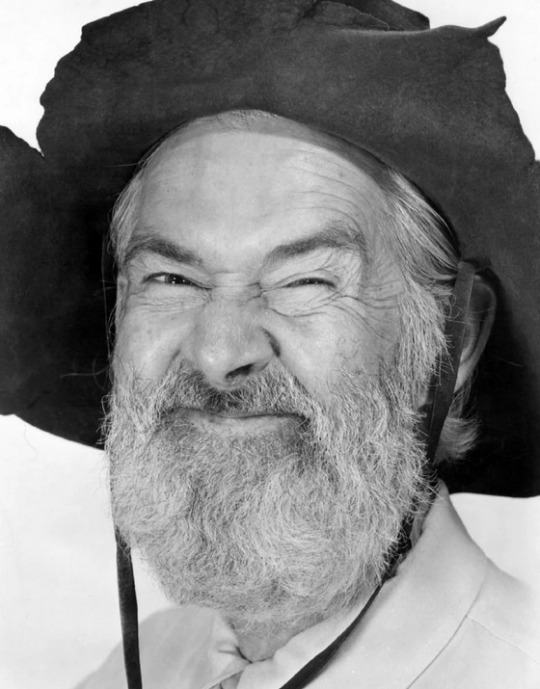
[cw for racist term for Native]
youtube
Gene Wilder:
youtube
"As I pull together submissions in my mind, I keep finding myself with the question "Is he scrungly or just Jewish?" And I worry. What is scrungly, if it depends on sidestepping Hollywood Leading Lady/Man standards? But by god, Gene Wilder is scrungly."
youtube
youtube
Excellently scrungly, even in his debut film. And the Producers requires no explanation. Big this energy:

47 notes
·
View notes
Text
Exploring the Zelda Merchandise Map

The above is something I have been curious about for a while: a map of Hyrule that is included with many pieces of merchandise. Despite this, this map of Hyrule does not correspond to any game and many oddities can be observed if it is examined in closer detail, which is what I want to do here.
To start with, it appears this map appeared about a decade ago as a licensed puzzle. Since then it has cropped up in all kinds of places, such as the background of the Japanese Zelda Portal, page 14 of The Legend of Zelda Encyclopedia or even just on packaging for stuff like keychains.

But what does the map actually depict if not something from the games? For clarification, it is first handy to look at the Hylian text on the map and translate it. This was already done in the Reddit post linked above and I have my own version of this below.
Of note is that there are various Hylian ciphers throughout the Zelda series. The one used on this map is the one introduced in A Link Between Worlds, which came out around the time the map was made in 2013. This Hylian cipher has gone on to become the standard cipher used in the series, making an appearance in every new Zelda title released since A Link Between Worlds.

This text makes somewhat clearer what landmarks we are actually looking at. It also becomes fairly clear that the middle of the map is based on Ocarina of Time's incarnation of Hyrule: Hyrule Castle sits north of Hyrule Field, with Lon Lon Ranch in the middle. Kakariko Village is east of Hyrule Castle and sits at the foot of Death Mountain, both of them sporting their designs from Ocarina of Time. To the southeast of the field is Kokiri Forest, complete with the Great Deku Tree and Link. Finally, we also have a lake that appears to be Lake Hylia from Ocarina of Time to the sourthwest of Hyrule Field.
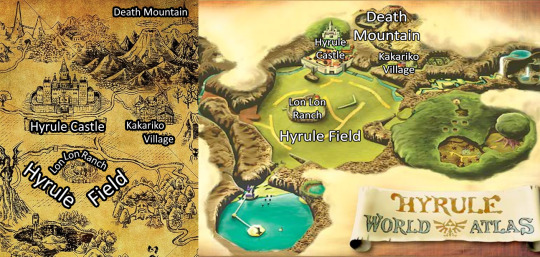

Moving further out, things get a tad stranger however. Let's start in the southwest and move around the map clockwise from there. In that corner of the map, a rendition of Gerudo Desert can be found.
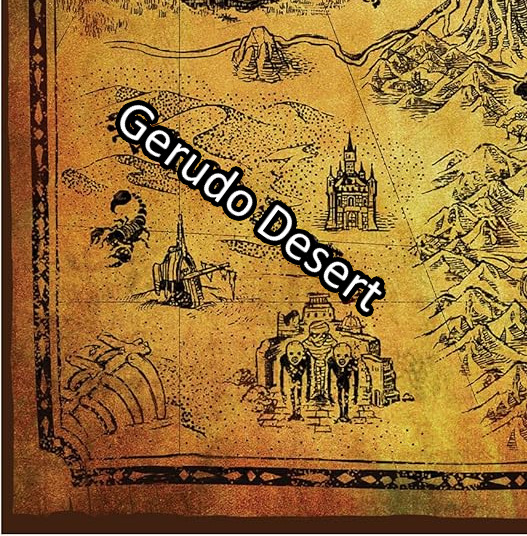
This is consistent with the placement of the desert in top-down Zelda games that were out at the time like A Link to the Past, Four Swords Adventures and A Link Between Worlds. In the 3D games out at the time, the desert instead extended across the entire western portion of the map (Skyward Sword) or the northwest (Ocarina of Time, Twilight Princess).
As for the landmarks on this portion of the map, they are a strange mix. The broken down ship mast may be a reference to the Sandship from Skyward Sword, which was broken after that dungeon is finished. The structure to the bottom of the map appears to be a reference to the Ancient Castle of Ikana from Majora's Mask, given the similarity and the presence of Redeads and a Gibdo (enemies that can be found in and near the castle). This is strange given that the Castle of Ikana is not located in Hyrule, but in Termina, which is a parallel world. The third structure on the top right appears to be an original of the map, but vaguely resembles Hyrule Castle from Twilight Princess. There is also a fourth structure tucked in the mountains on the northeastern border of the desert, perhaps referencing Gerudo’s Fortress from Ocarina of Time.

Moving to the northwest, we find Castor Wilds, a swampy area from The Minish Cap that was also located in Hyrule's west. Interesting to note is that Castor Wild is only the region's name in the English version of The Minish Cap. In Japanese, it is called タバンタ秘境 (Tabantha Wilderness), a name that would be reused in Breath of the Wild and Tears of the Kingdom. This may indicate this map was put together in the west instead of Japan or that the original artist took from the localized games for some reason.
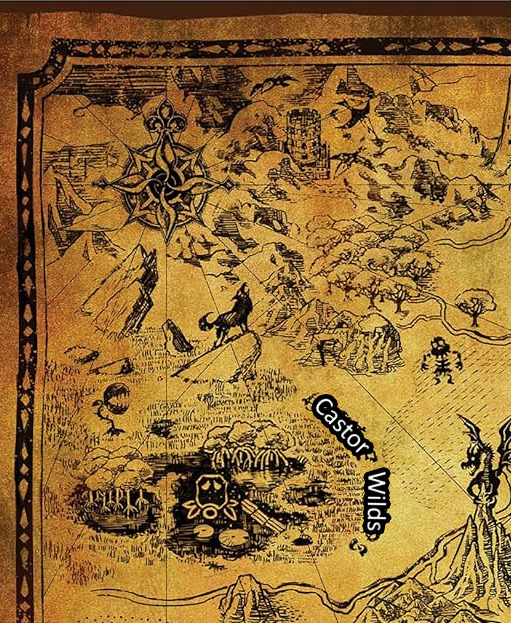
The depiction of Castor Wilds above has more in common with the appearance of the Southern Swamp from Majora's Mask, given the presence of bayou trees, a Big Octo and disconnected bridges made of logs. This poses the same problems as the seeming Ikana Castle in Gerudo Desert, as the Southern Swamp is in a parallel world.

There is also a mountain with a dragon on top in this area, east of Castor Wilds. It brings to mind Dragon Roost Island from The Wind Waker, a tall mountaintop upon which rests the dragon Valoo. That place is found in the northeast of Hyrule however and not the northwest. The dragon on the map also does not particularly look like Valoo, nor does the mountain particularly resemble Dragon Roost Island.
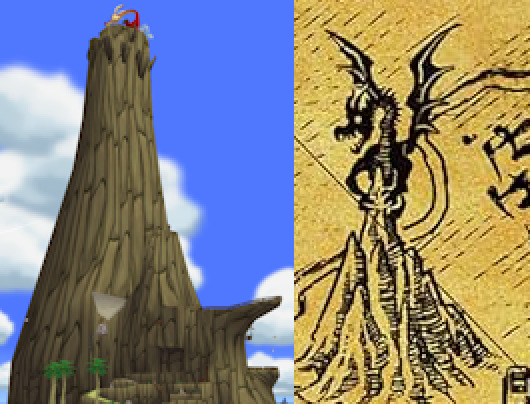
Other than this, there are few notable things in this quadrant. Depictions of a Wolfos, a Deku Baba and Stalchild can be seen, but most of the actual landscape is barren mountains or obscured by the compass. Perhaps the region is supposed to represent Snowpeak, a snowy mountain range in the northwest of Hyrule in Twilight Princess. There appears to be a tower in these mountains surrounded by Guays, but this does not correspond to any known location in the games.
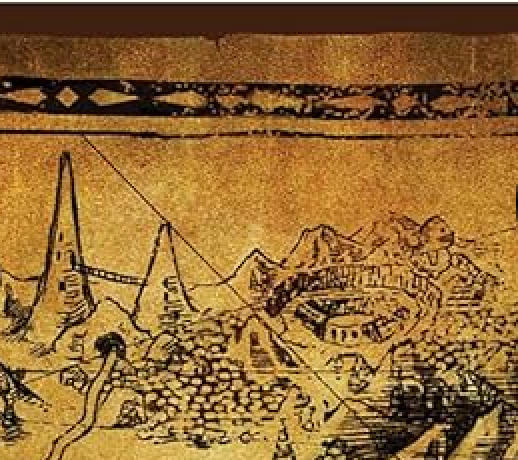
In the direct north of the map are two more structures not in the games: two pointy mountains connected by a rope bridge and a spiral quarry of some kind. A Goron can be seen at this quarry.
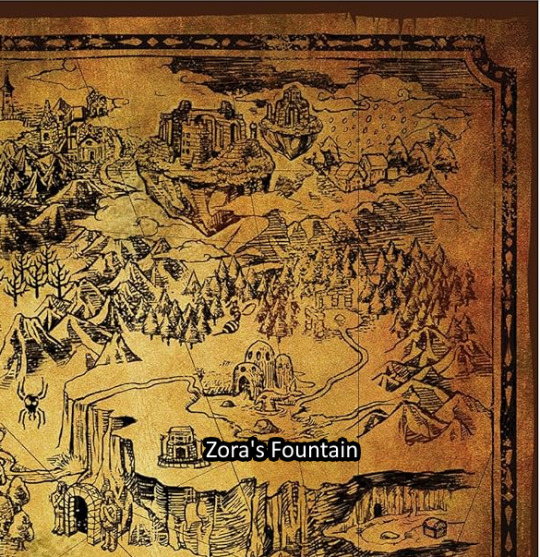
The northwestern quadrant is home to Zora's Fountain, corresponding roughly with its location in Ocarina of Time (south of Death Mountain and Kakariko Village and north of Kokiri Forest). It is far more to the west however, but it is still on top of a mountainous plateau behind a waterfall like in Ocarina of Time. The design of the fountain does not match any depiction found in the games however, albei a Zora can be seen bathing inside it.
Other than this, this quadrant of the map is home to many more structures where it is hard to pin down what they are. There is a village northwest of death mountain, a snowy village in the far northwest of the map and a pond surrounded by ruins that feeds into Zora's Founain. This last structure also somewhat resembles the Fairy Fountains from Ocarina of Time, except that those are found underground. There are also a couple of floating islands, but once again they do not correspond to anything in particular like the City in the Sky or Skyloft.

More to the south of this quadrant we also find a small stone building, a gate guarded by two statues with crossed arms and a cave with a treasure chest. This last structure is likely a reference to grottos from throughout the series wherein treasures can often be found. Finally, a Skulltula is depicted in this quadrant of the map.

The final quadrant of the map, the southeast, is mostly made up of featureless ocean. There is a nondescript ship in that ocean, also what appears to be Gyorg, a boss from Majora's Mask. Other enemies we can find on land here are a Chuchu as first depicted in The Wind Waker and a Peahat. A Gossip Stone is also present in the northeast of the image.
The final names location on the map is Faron Woods, and the art seems to pull from Skyward Sword and Twilight Princess. There is the Great Tree from Skyward Sword's version of Faron Woods and buildings that resemlbe Ordon Village, which is found in the forests south of Faron in Twilight Princess. The general location of Faron Woods on this map also matches that of Ordon, being found in the far south of Hyrule, beyond lake Hylia and many of the woods.

Finally, in this quadrant there are two more nondescript villages that do not correspond to the games.
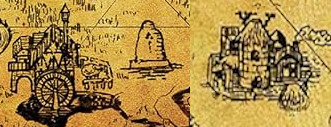
And that is everything I could find on this map. I seems to depict Ocarina of Time Hyrule, with its borders expanded with miscellaneous locations from other 3D Zelda games that were out in 2015. A lot of original locations are also mixed in. The origins of the map still remain a bit vague, but given how much it pops up in Zelda merch, it does appear to be official in some capacity. If anyone has more information about this topic, I'd be happy to know.
Addendum: As pointed out by @lady-sophie-17, it seems the structure at the north of the map with the Goron is actually Goron City, as it appears more or less he same as it is depicted as on the map of Ocarina of Time.

23 notes
·
View notes
Text
Okay but the Dunedáin. They've been roaming the western wilds for years and years. And then Aragorn goes off and gets himself made king of Gondor, huzzah ring the bells sound the trumpets etc.
But.
The Dunedáin. Do they all go to Gondor with him? I feel like that's the implication of things. But like...do they all want to? And if/when they do, how does it go?
(There has to be a significantly higher number of them than the 30 we see represented by the Grey Company, too, right? Like even assuming the addition of wives-elders-and-children to those numbers, there has to be a much larger population than that if they're maintaining a population. Even with intermarrying of the other locals. Like, even with Magical Noble Lineage going on to keep things from getting wonky, they can't be interbreeding that much or else everybody would be an Heir To The Throne Of Gondor by now lmao. Those 30 have to just be a fraction of their folk. The "good riders and good warriors who could be gathered on quick notice" fraction.)
Is everybody excited to leave their lowkey wilderness-with-the-occasional-vacation-in-Rivendell existence in favor of the Fancy Shiny White City Full Of Other Humans? The Dunedáin have been living like this for hundreds and hundreds of years. It's not just a "we spent a few decades in exile, but taught our kids Our Ways to preserve them, so they'd be comfortable when they went home" situation. They've been living like this for so long that this is their way of life. This is their home. And now they're supposed to just pack-up and go to Gondor and be fine?
And how do the Gondorians react to having not just a new king, but a new king who brings along a whole bunch of scruffy Rangers for his retinue? Are they welcomed eagerly by a people who've just endured great loss of life and need hands to help them rebuild? I mean tbf probably at first, sure; but how long does that welcome endure without starting to cool when these Rangers prove to be not just Gondorians From Elsewhere Who Nonetheless Act Just Like The Rest Of Us And Know Our City And Its Ways As Well As We Do? Because they don't! They don't even know which hall is used for banquets and which for dancing! They don't know that on Aldëa we wear carnë! and so on.
(Do they all just go to Ithilien with Faramir out of sheer what-the-fuck-am-I-going-to-do-in-this-bigass-city-ness?)
Yes they're all of the Blood of Westernesse and all that, shared Numenorian heritage blah blah blah...but imagine you've been living off-the-grid in the forests of Pennsylvania, and all of a sudden you're dropped in the middle of NYC and told this is your home now, enjoy? How weird would that be? How bizarre, how overwhelming?
Maybe you like it, maybe you thrive there! Maybe you find that Gondorian Civilization is what you've been looking for all along! But what if you don't? What if you find you really hate crowds, and the politics of the city are stifling, and you didn't spend the last seventy years travelling all over Middle-earth learning everybody's ways and culture, thanks, and frankly you'd rather be back in Bree making small-talk with simple farmers and Hobbits, where everybody knows your (nick)name and you're comfortable? Even if you do like it, even if this is All Your Hopes Come True, it's still got to be enormously disruptive. And if you don't...yikes.
(Again, sure, there's Ithilien. But even though that wild-land-recovering-from-the-scars-of-the-Enemy would be more familiar ground to you than the city itself, and Faramir is a great guy and all, Ithilien still isn't your home.)
Like...you don't get to just go back, do you? (Do you?) Maybe but even if you do, even if some of them did, their way of life is still kind of broken; because most of your fellow Rangers are in Gondor now, and you aren't even allowed into the Shire, and the Enemy you've been guarding folks from all this time is gone...
And sure, it's good! This is a good result! This is the Best Case Scenario Ending, really!
But still. What about the Dunedáin?
#things i should probably not drop into my queue when i'm sleep deprived and braindead#but who wants to bet that when i finish writing this i go on habit instead of intention and hit ''queue'' instead of ''save as draft''?#because i may be exhausted and braindead but i'm not so much so that i would take that bet i KNOW i'm forgetting to draft instead of queue#know thyself and all that hmm? yeah#anyway#lotr meta#lotr#dunedain#aragorn#gondor
87 notes
·
View notes
Text

Ok I have been repeatedly asked about maps and I cannot provide any that are anywhere NEAR up to date enough but I can provide this (still WIP and missing most of its lesser cities and virtually all of its towns LOL) map of the Wardi Empire.
(Note- don't take the exact paths of rivers and coastlines too seriously. The broad details are accurate but I'm mostly drawing squiggles here)
Key:
Red area: lands nominally claimed by Wardi imperial rule. It is less territorially contiguous than this map would suggest, but this is broadly accurate. Lavender area: lands of major tributary states/other conquered entities/contested areas (many all at once). Lands that are either self-governing but tributary to the surrounding empire, or heavily contested and in conflict against imperial land-grabbing. Light blue (within red/lavender boundary)- nominally claimed as Imperial Wardi land, but either largely wilderness or otherwise effectively self governing. Most of central Wardin is sparsely populated grassland and savannah, with dry scrubland to the south. Star: A central city-state Dot: A major city.
Key city-states:
Godsmouth - Religious center of Wardin, center of commerce and capital in all but name. Given its proximity to the entrance of the inner sea, it is the most critical port and center of trade.
Wardin- the original city-state from which the Wardi empire emerged. 'Wardin' is used interchangeably for this specific city-state and the empire itself, context depending. Home of the imperial family. Fed by agricultural lands around the Brilla river.
Jazait - city on the White Sea, important river trade route.
Erubinnos- city on the eastern White Sea, another important trade route. Close historical ties to Lobera via the Kannethod river.
Lobera- city-state at the head of the Kannethod River, eastern extent of the Wardi empire.
Erub- City-state along the Yellowtail river. It is currently experiencing a localized collapse due to catastrophically falling water levels. Named for the same historical figure as Erubinnos and the Erubin river.
Ephennos- the breadbasket of the Wardi empire, key agricultural land.
Tiberrich- Bears a name of an ancient royal Dain king, one of the most culturally diverse city-states with populations hailing from around the Viper.
Finnerich - recently conquered tributary state that fell into civil war, its new leadership is hostile to the Wardi Empire and is currently engaged in a protracted war for independence.
Some points of interest:
The White Sea- large sea to the south
The Viper- narrow inner sea to the north. its ends connect to the Inner Seas and the White Sea, its western tip ends about 55 miles from the ocean. Many have attempted and failed to bridge this gap with a canal, to the point that 'digging out the viper's tail' is a common expression that communicates an exercise in futility.
Sons of Creation - a strange, circular mountain range with a lake at its center and an island at the center of that. Believed to be the site of God’s sacrifice and the world’s creation. It is a prehistoric impact crater.
Jaquin’s Boot - a peninsula, claimed territory of the Wardi empire but functionally independent. The location of the sole native elowey population of the region.
Yellowtail river: originates from two separate rivers in Greathill, and dies out in the central savannah. Seasonal and periodic flooding extends its length dramatically.
Kannethod river: the largest river in the region and the most sacred, defines most of the eastern borders. Key trade route.
Erubin river: the largest river in the Greathill region
Black river: large and densely populated river mostly fed by the Erubin
Cholemdi - ‘the salt wastes’, a great dry lake and surrounding salt flats. Some condemned criminals are sent here, and the whole land is believed to be haunted. 'Saltlanders' live on its borders. Very, very rarely, seasonal rains and flooding of the Yellowtail river refills the lake.
Oaklands - largely undeveloped oak forests, source of a few major rivers.
Odatoche- The highest peak in the region, a long dormant volcano
Greathill - montane region. Source of several great rivers. Land of the Hill Tribes.
The tooth - a peninsula in the waters of The Mouth. Contains a port city Od-Koto.
The Tongue- lower Godsmouth.
#Not much detail on any of the city-states because I'm trying not to make this post 1000000000000 words long#This is the setting of 'The White Calf' which follows a bunch of assholes on a pilgrimage from Wardin (city-state) to the Sons Of Creation#wardin#blightseed#I have a lot more locations within this map in mind or like even fully developed but they just don't have names
90 notes
·
View notes
Text
Stone Turtle of Karakorum, Mongolia, c. 1235-1260 CE: this statue is one of the only surviving features of Karakorum, which was once the capital city of the Mongol Empire

The statue is decorated with a ceremonial scarf known as a khadag (or khata), which is part of a Buddhist custom that is also found in Tibet, Nepal, and Bhutan. The scarves are often left atop shrines and sacred artifacts as a way to express respect and/or reverence. In Mongolia, this tradition also contains elements of Tengrism/shamanism.

The city of Karakorum was originally established by Genghis Khan in 1220 CE, when it was used as a base for the Mongol invasion of China. It then became the capital of the Mongol Empire in 1235 CE, and quickly developed into a thriving center for trade/cultural exchange between the Eastern and Western worlds.
The city attracted merchants of many different nationalities and faiths, and Medieval sources note that the city displayed an unusual degree of diversity and religious tolerance. It contained 12 different temples devoted to pagan and/or shamanistic traditions, two mosques, one church, and at least one Buddhist temple.
As this article explains:
The city might have been compact, but it was cosmopolitan, with residents including Mongols, Steppe tribes, Han Chinese, Persians, Armenians, and captives from Europe who included a master goldsmith from Paris named William Buchier, a woman from Metz, one Paquette, and an Englishman known only as Basil. There were, too, scribes and translators from diverse Asian nations to work in the bureaucracy, and official representatives from various foreign courts such as the Sultanates of Rum and India.
This diversity was reflected in the various religions practised there and, in time, the construction of many fine stone buildings by followers of Taoism, Buddhism, Islam, and Christianity.
The prosperous days of Karakorum were very short-lived, however. The Mongol capital was moved to Xanadu in 1263, and then to Khanbaliq (modern-day Beijing) in 1267, under the leadership of Kublai Khan; Karakorum lost most of its power, authority, and leadership in the process. Without the resources and support that it had previously received from the leaders of the Mongol Empire, the city was left in a very vulnerable position. The residents of Karakorum began leaving the site in large numbers, until the city had eventually become almost entirely abandoned.
There were a few scattered attempts to revive the city in the years that followed, but any hope of restoring Karakorum to its former glory was then finally shattered in 1380, when the entire city was razed to the ground by Ming Dynasty troops.
The Erdene Zuu Monastery was later built near the site where Karakorum once stood, and pieces of the ruins were taken to be used as building materials during the construction of the monastery. The Erdene Zuu Monastery is also believed to be the oldest surviving Buddhist monastery in Mongolia.
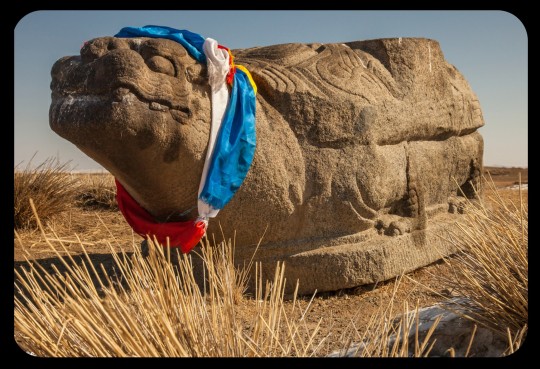
There is very little left of the ruined city today, and this statue is one of the few remaining features that can still be seen at the site. It originally formed the base of an inscribed stele, but the pillar section was somehow lost/destroyed, leaving nothing but the base (which may be a depiction of the mythological dragon-turtle, Bixi, from Chinese mythology).
This statue and the site in general always kinda remind me of the Ozymandias poem (the version by Horace Smith, not the one by Percy Bysshe Shelley):
In Egypt's sandy silence, all alone,
stands a gigantic leg
which far off throws the only shadow
that the desert knows.
"I am great OZYMANDIAS," saith the stone,
"the King of Kings; this mighty city shows
the wonders of my hand."
The city's gone —
naught but the leg remaining
to disclose the site
of this forgotten Babylon.
We wonder —
and some Hunter may express wonder like ours,
when thro' the wilderness where London stood,
holding the wolf in chace,
he meets some fragment huge
and stops to guess
what powerful but unrecorded race
once dwelt in that annihilated place
Sources & More Info:
University of Washington: Karakorum, Capital of the Mongol Empire
Encyclopedia Britannica: Entry for Karakorum
World History: Karakorum
#archaeology#history#anthropology#artifact#ancient history#mongol empire#mongolia#karakorum#middle ages#ancient ruins#art#turtle#bixi#ozymandias#poetry#mythology#genghis khan
326 notes
·
View notes
Note
Oc anon again! Please tell us more about Bo Matteo Dalton?? Very curious
certainly!

Bo is… well, to any stranger looking at him, he’s this early twenty year old man who for appearing so often in town, frequently hides away camping in the nearby wilderness rather than scrounging up the pocket money he makes by hunting for a local room. His clothing adding significant size to his silhouette, underneath it he’s a just notch above skins and bones.
He’s surprisingly well read and written, his telegrams formal and structured. Something to be expected when your aunt was a school teacher who personally saw to your homeschooling, and naturally he was homeschooled so there was more time to help his uncle- who’s poor physical condition limited what he could do- on their simple ranch.
Growing up, his family didn’t have much spending money. Enough to be comfortably fed, but valuables and “luxury items” weren’t things Bo had really possessed. This has led to him developing an eye for shiny things… pretty things. Unfortunately, it’s this trait that led him down the path that forced him to leave his childhood home.
“the remnants of a solitary camp lie here. in the remnants of the cold campfire. a jewelry box lies buried in the ashes.
within is an item of great sentimental value. expensive on it’s own but is something so much more.
it means nothing to the one who stole it.”

His horse, a dun coated Lusitano named Sidewinder, is a rather personable equine. Pawing at the ground if his rider leaves him standing around for too long without a chore, zig zagging out of reach when feeling particularly restless certain days, and has formed a large slight towards most snakes that come too close despite his namesake…

Only recently with this coming of the season, has Bo experienced his first snow. Something he hadn’t seen much up growing up on western side of the county in New Austin.
Bo’s story is still expanding, at it’s apart of a larger world filled with more than just his own causes and effects :)) but thank you for giving me the excuse to share things about him!
#denim artwork#bo dalton denim#rdr2 oc#rdr2#rdr2 original character#red dead redemption oc#red dead oc#redm roleplay#denim ask box#anonymous
20 notes
·
View notes
Text
The issue I see with the ESO Dark Heart of Skyrim depiction of Reachfolk is primarily the division between "ethnic/indigenous" stereotypes, e.g. living in "tribes" in the middle of buttfuck nowhere and being hostile to outsiders, and the "civilised" Reachfolk who are depicted as far smarter because they live within the relatively safe confines of Markarth with taverns and banking services and other city crap that are the benchmarks of modernity and Tamrielic civility.
There is no reason beyond blind ethnocentrism that this is a division that exists, either in real life or in fantasy (if we allow the latter to truly break the bonds of fiction into something *better*). So-called "primitive" peoples, be that the Azande or Trobrianders, have been subject to ridicule due to their indigenous knowledge, myths, and beliefs as unaligned with our post-enlightenment, postmodernist, scientific worldview. In the eyes of many writers, projecting what is deemed within their worldview to be "good" for their characters is really a detriment when it comes to original worldbuilding.
At the risk of sounding like yet another unhinged Marxist, my final comment concerns the structures of Reach society. The hierarchical structure of Reach clans is not something I'm super familiar with so I may come off as sounding like an idiot here, but bear with me. Why are Reachfolk, with supposedly primitive and unchangeable belief systems, upheld to the societal structures of mainstream Tamrielic groups? Why would they trade with gold, if they traded at all; and if they didn't, someone needs to do some research on the historical basis of global trade, which cough cough involves cooperation and amicable relations between disparate groups over huge distances and periods of time. Why are the Reachfolk exempt from this cycle of amicability? Is it more thrilling to write them as hostile savages, ready to attack anyone who supposedly threatens their way of life?
Yes, they would be thoroughly aware of the dangers of colonisation. But why have city Reachfolk been portrayed as sensible citizens of Tamriel while their brethren in the wilderness are presented as wild, IGNOBLE savages? Where is the justice in portraying indigenous peoples as they truly are and are capable of, rather than re-used Western tropes surrounding the division of self and savage Other?
Once again, this ties into the prominent Western tradition of Othering those who don't follow the tenets of a monotheistic, hegemonic, organised religion, or similarly prescribed worldview. By not including Aedra worship in Reachfolk culture, they are seen as savages and people who should be civilised and brought into the fold of the Divines. There is a pervasive undertone of violence linked to so-called "primitive" groups in TES, and this may just be to make convenient NPC bandits, but also perpetuates a stereotype that deeply harms real-life indigenous and culturally marginalised groups.
This is why careful worldbuilding is so so so important because we can project the world WE want, free from the socionormative biases that taint fantasy writing. Yes it's necessary to draw inspiration from real life, I do it all the time, but there's a point where you say "what if real life isn't that great of an idea to project here?"
I'd like to conclude by saying that I'd like to see this decolonisation of fantasy writing extended to other socially marginalised and misunderstood groups in TES, such as Bosmer, Argonians, giants, minotaurs, and the Bandaari (I could rant about them all day but I have other writing to attend to). We can do so much better not only with our ability to create some truly original fantasy worldbuilding, but also by showing others that by decolonising our own writing, we are becoming more sensitive to the worldview of others and incorporating that in an insightful and respectful manner.
249 notes
·
View notes